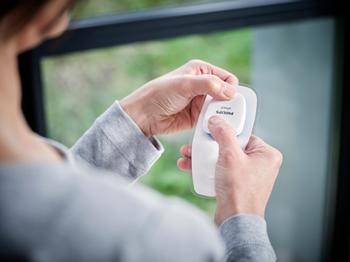ECG – how it works
Long-term ECG with ePatch from Philips records the heart's rhythm over several days - smoothly, discreetly and completely without wires.
The sample collection fee is a fixed cost that refers to the visit to the clinic where you submit your sample. The fee is not affected by how many tests you have ordered, but varies depending on the order value:
For purchases over 1000 SEK, the sampling fee is included.
To order a long-term ECG, add the product to your shopping cart and pay at checkout.
After payment, you will receive an activation code via email. Log in via "My test answers" or click on the link in the email, and use the code to activate and register ECG.
After activation, a long-term ECG will be sent to your home directly.
Follow the included guide's instructions, step by step, to apply long-term ECG to your body and activate the device. Fill in the accompanying diary according to the instructions.
Return the long-term ECG and diary in the enclosed, pre-paid envelope after the measurement period has ended.
Within 3-5 business days after the device is received for analysis, you will receive a report and a medical assessment of your heart rhythm.
2 695 kr
Testmottagningen.se is operated by the healthcare provider 19Plus AB. We are both responsible for personal data and medically responsible for the information you provide to us. We protect your privacy and have systematic quality work with the aim of maintaining a high level of security.
Read more about how your privacy is protected hereYes, Philips ePatch makes it possible to perform the examination at home.
Read moreePatch is wireless and more discreet compared to the traditional Holter ECG with cables.
Read moreYes, you can shower with it carefully, ePatch should be protected and not have water jets directed directly at it.
Read moreThe result usually arrives within a few business days after the ePatch has been received after return.
Read morePhilips ePatch continuously records the heart's rhythm and sends the data for medical analysis.
Read morePhilips ePatch is a thin and waterproof ECG patch for long-term measurement of the heart's electrical signals.
Read moreIt can reveal temporary heart rhythm disorders such as atrial fibrillation, extra beats, and pauses in the heart rhythm.
Read moreA measurement of the heart's electrical activity over 1–14 days to detect heart rhythm disorders.
Read more